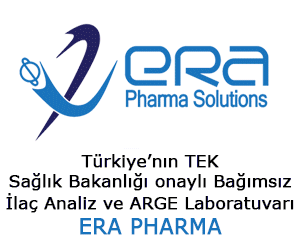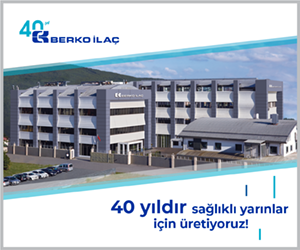FDA Komisyon Üyesi Scott Gottlieb’in görüşleri;
FDA , Uyuşturucu Rekabet Aksiyon Planının uygulanmaya devam etmesinin bir parçası olarak jenerik rekabeti teşvik etmek için ilave adımlarını duyurdu.
Bu planın üç ana bileşeni vardır:
jenerik ilaç girişini erteleyebilecek markalı şirketler tarafından oyunların azaltılması;
bazı sofistike ilaçların jenerik sürümlerinin onaylanmasını zorlaştıracak bilimsel ve düzenleyici engelleri çözmek;
ve yeni bir jenerik ilaç onaylanması için gereken süreyi azaltmak için jenerik başvuruların onaylanmadan önce geçirdiği gözden geçirme döngülerinin sayısını azaltmak için FDA’nın genel gözden geçirme sürecinin etkinliğini ve öngörülebilirliğini artırmak.
Specifically, the FDA is releasing two documents today that together will streamline and improve aspects of the submission and review of generic drug applications (known as Abbreviated New Drug Applications, or ANDAs). The first is a draft guidance for industry – “Good ANDA Submission Practices” – which highlights common, recurring deficiencies we see in generic drug applications that may lead to a delay in their approval. One key reason why generic approvals are delayed is that many applications need to undergo multiple cycles of review. While often this is because the application lacks sufficient scientific evidence to support approval, there are also many times when the FDA must ask applicants for additional information in order to determine that the requirements for approval have been met, even if an application meets the threshold requirements for filing. In fact, it currently takes on average about four cycles for an ANDA to reach approval – not necessarily because the product will not meet our standards, but sometimes because the application is missing information necessary to demonstrate that it does. These multiple cycles of review are costly and inefficient. They require a great deal of additional, avoidable work by both agency staff and the applicant and can delay the entry of generic competition. Through today’s guidance, as well as others from the agency, we can achieve one of the FDA’s key goals in 2018 – to reduce the number of review cycles – by helping applicants avoid these common deficiencies that lead to review delays and application cycling.
While industry does its part to improve the quality and completeness of applications, the FDA also is taking new steps to enhance the efficiency of our review process. Today, we’re publishing a companion to the guidance in the form of a Manual of Policies and Procedures (MAPP) – “Good ANDA Assessment Practices” – which outlines ANDA assessment practices for FDA staff. The document formalizes a more streamlined generic review process, including the introduction of new templates that will make each cycle of the review process more efficient and complete.
Among other things, the new MAPP establishes that when the FDA determines that an ANDA cannot be approved in its current form, reviewers should provide more detail to generic applicants to explain the deficiencies with the application; outline details on how this information should be provided; and provide more detail, when available, on the additional information that the generic applicant must provide to the agency to support an approval decision during the next application cycle. The MAPP establishes these practices across offices charged with ANDA review, including the Office of Generic Drugs as well as the Office of Pharmaceutical Quality. The goal is to make sure that generic drug makers are made fully aware of the problems that are delaying the approval of their application and understand how to fix them. As with the draft guidance on submission practices, this MAPP should reduce the number of subsequent cycles that applications must undergo, and avoid the cycling of applications that is a significant cause of the delays in generic approvals. The MAPP also clarifies the roles and responsibilities of different review disciplines to reduce inconsistencies as well as duplicative and unnecessary work. This will greatly increase the efficiency and effectiveness of the agency’s generic drug review teams. As the new MAPP states, “Collectively, these changes are expected to expand access to generic medicines,” and enable the FDA’s “highly trained experts to focus more of their attention on novel or challenging scientific and policy issues associated with the development and assessment of generic drug products.”
This new MAPP does not alter the important Generic Drug User Fee Amendments IIreview goals or program enhancements, nor does it alter the regulatory requirements for ANDA approval. Rather, the goal of the MAPP is to guide FDA staff to help ensure we work more efficiently with the goal of improving review times.
The FDA’s generic drug team already has made substantial investment in process improvements that are yielding faster assessment and approval times, translating to direct benefits for consumers through more approvals of lower-cost drug options. In 2017, we had several record-breaking months for the number of generic medicines approved in a single month, most recently in November, when we approved the highest number of generic medicines in the FDA’s history. For the full year, the FDA approved a record number of generic drugs, including first generics, high-priority medications, and drugs meeting vital public health needs. In addition to the increase in the volume of drugs being approved, the average number of review cycles needed to approve each eligible application is decreasing. The FDA took action on more applications in the last six months of 2017 than any other six-month period in FDA history.
The policies we’ve announced today and those that we’re anticipating in early 2018 represent our ongoing work on the Drug Competition Action Plan— one of the FDA’s highest priorities in 2018. In the coming year, we’ll be taking additional steps to improve our own practices and to help guide industry to make sure their generic drug applications can be acted upon as efficiently as possible. For example, we’ll be building on our initiatives to accelerate generic entry of complex generics, which include medicines like metered dose inhalers used to treat asthma, as well as some costly injectable drugs, which are sometimes hard to copy.
We’ll also continue to take steps aimed at making it harder for brand companies to sometimes adopt tactics that prevent generics from coming to market in the time frame that the law intended. This includes guidance development to address three important areas during the first quarter of 2018: potential abuses of the citizen petition process, companies that restrict access to testing samples of branded drugs, and abuses of the single, shared system REMS negotiation process.
It’s part of our public health mission to ensure safe, effective, quality medicines are available to the patients that need them. Most importantly, the FDA will continue to be the gold standard for approval of all drug applications, and we will make sure that consumers can continue to trust in that assessment.
The FDA, an agency within the U.S. Department of Health and Human Services, protects the public health by assuring the safety, effectiveness, and security of human and veterinary drugs, vaccines and other biological products for human use, and medical devices. The agency also is responsible for the safety and security of our nation’s food supply, cosmetics, dietary supplements, products that give off electronic radiation, and for regulating tobacco products.




















